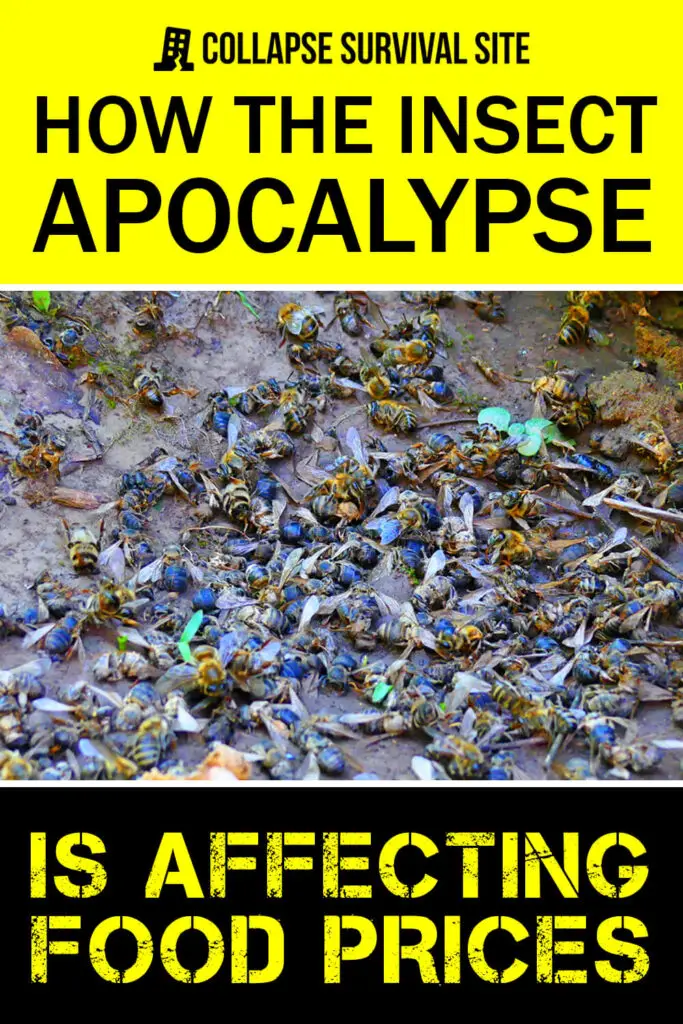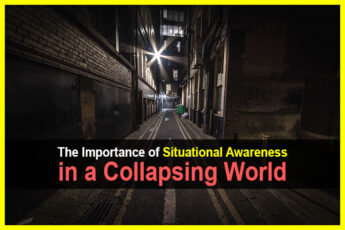Estimated reading time: 9 minutes
Something many American travelers and road-trippers have noticed recently is a reduction in the number of insects striking their windshields. For the record, they’re not imagining things.
According to a study done in Great Britain, flying insect numbers have plunged by 60% since 2004. How did they know that? Researchers did an extensive study of the number of insect “splats” on license plates and were able to actually compare it to data from a similar study in 2004.
Whether it’s your windshield or a British license plate, the number of insects worldwide is plunging at an unprecedented rate.
Want to save this article for later? Click Here to Pin It On Pinterest!
Is That So Bad?
If it were only mosquitoes we could probably be grateful. Unfortunately, the insects we’re talking about include many bugs referred to as “pollinators.”
Pollinators are the insects that visit flowers and blossoms and in the process exchange pollen to fertilize or “pollinate” a plant. The prime pollinator in the world is the Western Honeybee, but it’s not just about honeybees. A wide range of insects act as pollinators from all species of bees to butterflies, moths, wasps, hornets and the list goes on. If it can fly and it’s attracted to a flower or blossom, it’s a pollinator.
And It’s Not Just About Pollination
Insects provide other benefit to the environment beyond getting plants to bear fruit and seeds. Insects recycle organic matter and control pests. Some wasps lay their eggs in the tomato worm (Hornworm) and when they hatch they immediately attack the closest tomato worm and eventually wipe them out of a garden.
Many other insects engage in predator/prey behavior and it’s the bugs that are usually the insect predators or the pollinators that are in the most significant decline.
Speaking of predators, birds and fish consume insects as a major part of their diet particularly trout and salmon. If you think salmon is expensive now it won’t get any better as insect populations decline.
Impact on Food, Farms and Famine
It’s common for many orchards to locate colonies of honeybees in a corner of the orchard. The bees ensure that the trees are pollinated and increase the potential yield from every tree.
But there’s more to it than orchards and backyard gardens. Insects actually pollinate more than 75% of all global crops. Pollinating by hand would cost more than $570 billion dollars every year. In the U.S. the labor cost associated with hand pollinating rather than by insects is estimated at $57 billion.
The overall result of the declining insect population is a lower yield from every crop. As the available food supply dependent on pollination declines, the prices will increase. In fact, they already have.
And here again, it goes beyond pollination. Cattle ranchers depend on Dung Beetles to break down livestock manure estimated to be worth $380 million per year.
What’s Happening?
A large brunt of the blame for this insect apocalypse is the widespread and constant use of pesticides particularly with commercial farming operations. It’s a catch-22 as the pesticides are used to kill insects that reduce yields, while also killing the insects that increase yields. Unfortunately, there is no balancing act with commercial pesticides. They kill all bugs indiscriminately, but it’s not just about pesticides.
Beyond the Pesticides
4 factors have emerged as a direct threat to insect populations and it’s not just the constant use of pesticides. They include:
- Habitat Fragmentation
- Climate Change
- Light Pollution
- And Pesticides
1. Habitat Fragmentation
Around the planet, ecosystems are being disrupted, changed and permanently altered.
- Human population growth has cause the spread of housing across once natural and wild areas where insects thrived.
- Humanity has altered 97% of Earth’s land through habitat and species loss.
- Nearly 90% of wild habitats will be lost to commercial agriculture by 2050.
- The spread of commercial agriculture has plowed under natural biomes and replaced them with tilled fields of genetically modified crops that are still sprayed with pesticides.
The result is that the wild fields and forests that create prime habitat for insects are being methodically destroyed and replaced while the insects are continually assaulted by a battery of insecticides.
One example is an unintended consequence driving Monarch butterflies to extinction. Butterflies are prolific pollinators and Monarchs depend totally on a plant known as Milkweed. Across the U.S., local and state and even federal agencies are engaged in eradication of Milkweed plants along roads, highways, and fields.
The result of this Milkweed eradication program is the loss of a prime and critical part of the natural biome that Monarchs are largely dependent on to survive. In this regard, herbicides join the threat of pesticides as the war continues to rage against insect populations and their habitats.
2. Climate Change
Everything on the planet is at the mercy of weather extremes due to climate change and insects are no exception. Here again, weather extremes affect every animal in biomes whether its drought, extreme heat, flooding, or wide shifts in humidity levels.
The stress of weather extremes (especially humidity) make insects particularly vulnerable to all manner of diseases from fungus to parasites. Drought and dry heat take a particular toll on insect larvae and eggs, and flooding wipes them out en masse.
3. Light Pollution
We see it all the time. A flurry of bugs flying around a light at night. This behavior is an act of confusion as the insects are attracted to the light because they’ve confused it with the sun for navigation, or see it as a characteristic of water reflections where they mate and breed.
And the lights are everywhere from buildings to vehicle headlights to wildfires and gas flares from oil drilling operations. It’s estimated that 33% of the insects drawn to artificial light will die by morning either due to predators or exhaustion.
4. And Then it’s Back to Pesticides
When you factor all of the stress levels impacting insects from loss of habitat to climate change to light pollution, it should be no surprise that the effect of pesticides is so significant.
And it’s not just about pesticides sprayed onto a field. The wind carries many pesticides far and wide. Rain washes the chemicals into creeks, rivers and lakes not only polluting our drinking water, but wiping out insect life-cycles for those insects that need water to breed their larvae.
It’s estimated that one billion pounds of pesticides are spread across farms and fields in the U.S. every year. The argument is what we’ve already mentioned: it increases crop yields but it is also destroying the world’s natural pollinators. The big question is when does the decline in the world’s insect population reach a new tipping point outweighing any yield benefits from the use of pesticides?
Affects on Food Prices
The profit margins on produce are significant. The average store makes a 30 to 36% profit on produce. That’s a lot compared to the overall store average of 1 to 3%. The result is that grocer’s are going to hang on to those high margins from produce and resist price decreases.
The end result is a food supply not only tainted with a dizzying array of pesticides, but continuing to rise in price as net yields continue to fall due to the ongoing loss of local pollinator populations.
The Outlook is Grim
A report concluded that 40% of U.S. Honeybee colonies died in 2018 alone.
The decline in insect populations is accelerating and its projected that we are at risk of losing almost all insects in 100 years. The impact on the food chain will be catastrophic particularly on fruit, nut and vegetable crops.
As food becomes harder to grow and as yields continue to diminish, prices will only spike higher and higher. There are no current estimates for how high those prices can go but as we’ve already noted it will cost hundreds of billions of dollars to manually pollinate plants.
Those costs will be passed on to the consumer and common fruits and vegetables will emerge as expensive and luxurious delicacies rarely consumed.
In fact, you may have already noticed the price for produce at the grocery store seem higher than you may remember. Too many people are blaming that on the after-effects of the pandemic or the latest wave of inflation. Hiding behind the scenes is another cause and the continuing decimation of insect populations is the clear villain.
Solutions?
So far, solutions are few and far between. Some hope that pollen in the wind can compensate for the loss of pollinators. That’s highly unlikely. Manual pollination will no doubt become more common and significantly raise food prices.
Another solution is one that many people already engage. Stockpile foods and grow your own from seed. The stockpile would have to be significant and you may have to someday physically pollinate your garden(s), but if the thought of eating a peach once a year is too much to bear you may need to find your own solutions
Key Foods to Stockpile
The greatest impact on fruits and vegetables will be on those plant foods that blossom and require pollination. Root vegetables may be the only survivors although their seed production will be significantly reduced. The same applies to many green, leafy vegetables -the edible leaves will grow without pollination but their seeds will be in short supply.
√ Canned Fruits
- Mandarin oranges
- Apples or apple pie filling
- Pears
- Peaches
- Fruit cocktail
- Apricots
- Plums or prunes
- Pineapple
- Cherries
- Cranberries
√ Canned Vegetables
√ Seeds
- Stockpiles run out. Having the seeds to grow your own fruits and vegetables give you a sustainable way to put produce on the table while you harvest the seeds for later crops. Save what you can grow and remember how to hand-pollinate –just in case.
The Absurdity of it All
If it seems absurd to solve the problem of an insect apocalypse by storing cans of fruit in the basement –it is. But that’s where we are today. As we continue to find ways to destroy our habitats, wildlife, and even insects we have to wonder if or when it will ever stop. In the meantime, food prices will continue to rise and those precious cans of peaches and invaluable apple seeds in the basement may become one of the most valuable things we store.
Like this post? Don't Forget to Pin It On Pinterest!









